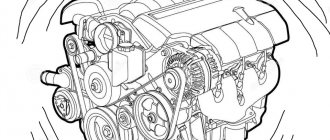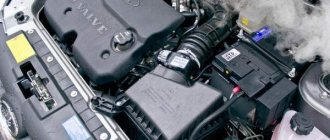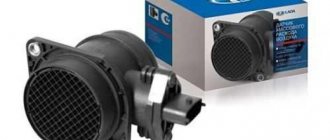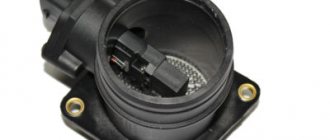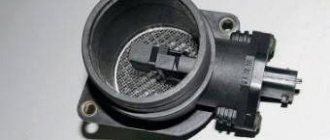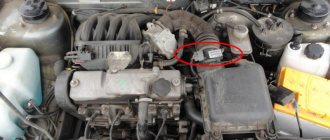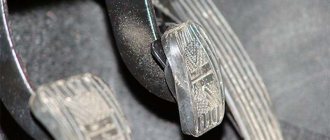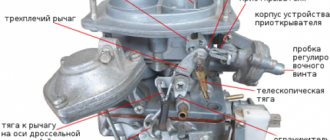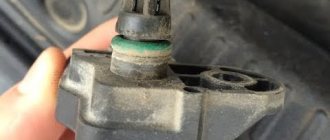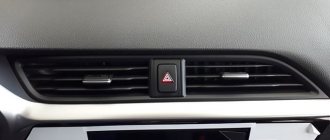Reliable operation of a car engine is achieved through the correct operation of all internal combustion engine components. The VAZ 2114 is equipped with an injection engine, which is demanding on the frequency of the system and its tightness. The slightest deviations from the permissible values lead the engine to emergency operation. In order for the engine to operate correctly, it is necessary to carefully monitor the tightness of the intake system.
All air entering the engine must be taken into account by the air flow sensor, but it happens that unwanted air leaks appear in the car, which lead to unstable operation of the engine in all its operating modes.
This article talks about how air leaks affect the operation of the VAZ 2114 engine, as well as ways to find and eliminate it. It is quite difficult to find the air leak on your own, but after studying our article, you can easily find the unfortunate place where the system is depressurized.
How does air leakage affect the operation of the internal combustion engine?
For reliable operation of the internal combustion engine, a sealed air intake system is needed. This is necessary for accurate preparation of the fuel mixture. The engine control unit prepares the air-fuel mixture based on the readings of the mass air flow sensor (MAF). The air passing through the mass air flow sensor is counted and transmitted to the control unit, which sends a signal to the injectors and opens them and keeps them open until the required amount of fuel is supplied to create the correct mixture. This operation of the internal combustion engine is correct, but when unwanted air leaks appear in the engine after the mass air flow sensor, its volume increases.
It turns out that the air flow sensor transmitted readings to the ECU about the same amount of air passing through it, but in fact, due to suction, the air volume is much larger than it should be, but the ECU does not know about it. Because of this, the fuel mixture is formed incorrectly.
Diagnostic methods
The engine's refusal to idle is a consequence of a lean mixture, caused by excess air in the fuel line.
This is accompanied by:
- Rusty fuel supply pipes.
- Fuel hoses that have dried out as a result of long use and are no longer held in place by clamps.
- Fuel filter with seal defects.
- Exhaust pipes that have lost their seal.
- Injection pump seals.
- Air entering through the manual lever of the fuel pump.
- Fuel pump seals.
- Obsolescence of seals.
First way
Diagnosis of the defect involves turning off the fuel pump and powering it from another vessel (for example, a plastic canister) . Independent work will require a 3÷4 liter container, two transparent hoses, one meter long, and a pair of clamps. Observing cleanliness measures, the forward and return fuel lines from the injection pump are replaced with transparent tubes, and the air is removed from it.
One of the ways to remove suction is to clean the place of work and the location of the tank above the fuel pump . It is necessary to unscrew the “return” bolt, through which, according to the principle of a siphon, air escapes before fuel appears. The fitting bolt returns to its place. Running the engine for a few minutes removes any remaining air.
Video about diagnosing the fuel pump for air leaks
Second way
It consists of testing the fuel filter (standard), placing it below the injection pump . The method is focused on determining suction through a filter. If there is no result, all tubes, tank, and hoses are checked. This method of powering gives precise indications of difficulty starting the engine.
The origin of leaks in the fuel system of cars with a diesel engine is based on atmospheric pressure. It is higher than the pressure that is created when pumping fuel from a car tank. This is due to the replacement of brass fuel lines with rubber and plastic tubes and connecting them with clamps. Meanwhile, hoses made of such materials have a shorter service life. Reference is made to the fact that synthetic pipes in the engine compartment heat up, sag, rub, and, as they wear out, contribute to air leakage .
Thus, mechanical stress, overheating, and the use of cleaning agents capable of softening non-metallic materials and hermetic compounds can be attributed to the root causes of suction.
Signs of air leaks
Incorrect formation of the fuel mixture leads to unstable operation of the internal combustion engine and with this problem the following symptoms are observed:
- Difficulty starting the engine when cold after a long period of inactivity;
- Unstable idling, speed jumps from 500 to 2000 rpm are observed;
- Increased engine vibration at idle;
- Loss of power and former dynamics of the car; to accelerate the car you need to press harder on the gas pedal;
- Fuel consumption increases;
These signs indicate a problem with the vehicle and require a quick solution to the problem. It should be noted that these symptoms can arise for other reasons, but checking the engine for air leaks is one of the number one points in solving problems in the operation of the internal combustion engine.
Vacuum hose repair
If your vacuum hose is damaged, you don't have to buy a new one. The hose is long. You can cut off the damaged part and reattach it to the engine.
The most common damage is at the ends of the tubes. Always ensure that the clamps are tight to prevent further leaks.
After repairs, start the engine and leave it idling. Listen for any hissing sounds.
If you decide to replace the vacuum hose, use one that is similar in length and diameter. Vacuum tubes are designed for specific locations, such as the brake booster or PCV (Power Crankcase Ventilation) system.
Places where there may be suction
Air leakage can be anywhere where it passes to the combustion chamber, be it the intake corrugation or the receiver. There are several places where system depressurization occurs quite often.
Places of possible suction:
- Joints of the corrugation with the sensor and throttle assembly;
- Idle air control;
- Small breather;
- Vacuum brake booster;
- Absorber tubes;
- Injector rings;
- Intake receiver gaskets;
All of the above places are prone to air leaks in the VAZ 2114 system and if leaks are suspected, it is necessary to inspect these particular suspicious places.
Briefly about each place
Corrugated joints
The corrugation is connected to the throttle assembly and the mass air flow sensor through a clamp; sometimes this clamp may not provide reliable tightening, which leads to suction.
RXX
The idle air control is installed in the remote control through an o-ring, which ensures the tightness of the system. Often this ring loses its properties and begins to let air through.
It should be noted that the IAC is installed only on cars with a mechanical throttle.
Breather
The small breather communicates with the intake corrugation through a clamp; relaxation of this clamp leads to possible air leakage in front of the throttle assembly.
VUT
The vacuum brake booster is connected to the intake receiver through a special hose, which can become damaged and begin to let in unwanted air; also in the VUT, the membrane and intake fitting are often damaged, which leads to air leaks through the brake booster.
Injector rings
To seal the junction of the injectors with the cylinder head, special rubber rings are used, which ensure reliable tightness of the system and prevent its depressurization. Due to high temperatures, rubber rings tend to lose their elasticity and become rigid, which leads to air leakage through them.
Receiver seals
The plastic receiver is connected to the cylinder head through rubber sealing rings that adhere to the surface of the head. Due to high temperatures, they lose their properties and begin to let in excess air.
Reasons for airing
Where can air get into the carburetor? As a rule, this is due to loose tightening of the electromagnetic valve or holder (on some cars, instead of an electromagnetic valve, a nozzle holder is screwed in), drying out and damage to the rubber cuff of the adjustment screws, damage to the vacuum tubes and other reasons.
Let's take a closer look.
- Often, due to various reasons, EM valves are turned out and even lost. In addition, the valve makes it possible to regulate stable engine speeds in idle mode. If there is a holder, it must be screwed in to the proper depth. Finally, the EM valve has its own rubber seal, which can dry out over time. You should definitely check it out.
- Both adjusting screws are equipped with O-rings. Over time, the latter may no longer hold, and then air is sucked in from here.
- Vacuum tubes are laid from the distributor to the carburetor device, and also from the brake control unit to the intake manifold. On such a long line, yes, there are gaps, and in some places the hoses break or holes form. Thus, airing of the system occurs.
Carburetor gasket
In addition, you need to pinch the hoses one by one near the carb fittings and try to start the engine. Let's say the engine does not start due to severe air intake. By pinching the hoses, you can block the suction, which a priori will help the power plant start.
Gaskets occupy a special place in the carburetor system. They also need to be checked for leaks. If the gaps are not noticeable externally, and the sounds of suction are not audible when the starter device is turned, you need to tighten the bolts of the intake mechanism and fuel mixer, hoping that the gaskets are loose. Then check engine starting again.
By tightening torque. It is recommended to fasten the carburetor clamps with a force of 13-16 N.m, and the manifold nuts with a torque of 21-26 N.m. This means that you should not pull too much, otherwise you can easily damage the threads. It is extremely dangerous to overdo it on a hot engine.
Some experts do this. Cover the connections with VD-40 liquid or soap foam. Then they observe. If a window forms in the foam, this is where the leak occurs.
In general, you should not overtighten the nuts! Due to excessive tightening, the seating plane of the carb can easily become deformed, and then air leaks will occur for this reason.
The defect of an uneven surface is detected as follows. Place the carburetor, removed from the car, on a flat table. The plane should be completely free of grooves and bumps. It is better if it is a sheet of thick glass placed on a table. Then you need to look carefully to see if there is a gap between the surface of the carb and the glass. If yes, then this indicates deformation.
Checking the internal combustion engine for air leaks
To make sure there is an air leak in the engine, there is no need to go to a service station and pay a tidy sum. You can check the presence of air leaks yourself.
- To do this, unscrew the mass air flow sensor from the air filter box and remove it.
- Next, start the car and close the inlet with your hand or some other object.
- With a sealed system, the engine should stall and the intake corrugation should compress and remain in a compressed position for several seconds.
If the car does not stall or stalls, but the corrugation does not compress, then most likely there is an air leak in the car and you need to start looking for it.
Lada 2109 The greenest amulet › Logbook › Check the tightness of the injectors.
I recently cleaned the nozzle myself. I took it out and connected it to the battery through a light bulb. For cleaning I used ABRO carburetor cleaner. The nozzles were blown out with a not very good burner. After some time it went away. My car consumes a lot of gasoline, but I thought that everything was fine with the injectors, since they didn’t miss them during cleaning. Also sausage on my knees. So I unscrewed the spark plugs to see what they looked like. Then a surprise awaited me. The 3 cylinder cap was filled with gasoline, as if you had dipped it into the gas tank. The rest of the candles are like nothing else. A couple of days later I unscrewed the spark plugs of cylinders 3 and 4 (I didn’t do the rest, I didn’t have time), and again 3 gasoline spark plugs. Some time passed, I unscrewed the third spark plug and it dried up... What an epst. I twisted it for a couple more days, it was always dry. BUT! I won't let my typewriter live like this???? I will rape you until she earns like a Murzillian. I decided to gather my strength and check the injectors for leaks. I removed the air filter and receiver tube. UNDER-END removed the screw so I could remove the fuel lines from the bracket, I bent them.
He unscrewed the fuel rail screws, turned the injectors toward him so he could see the injectors, and used a screwdriver to secure it in that position.
He dried each nozzle.
1 nozzle (DO)
2 nozzles (DO)
3 nozzles (DO)
4 nozzles (DO)
I connected the pressure gauge from the pump to the fuel rail to see the pressure but couldn't find the clamp so I lost it a bit so the pressure can be ignored but it dropped; I turned the key to the on position so that the pump pumped gasoline into the fuel rail. And immediately, IMMEDIATELY I saw that all the injectors began to leak gasoline, and a lot of it... Then I realized that I had hit the injectors.
1 and 2 injectors (after)
3 nozzles (after)
4 nozzles (after)
Now I’m thinking about how, what and where to order injectors so that they are more economical and normal. Having searched for information on the Internet, I came to the conclusion that the analogue of my injectors is BOSCH 0 280 158 110 (since they have not been produced for a long time). My analogue was the most expensive among other injectors from both BOSCH and SIEMENS. great.. Will have to save money???? Because I want everything to be fine with my car.
How to find the leak location
Air leaks can be found in several ways. The most popular method is a smoke generator, but if this is not available, then you can use a regular soap solution.
Using a smoke generator
A smoke generator is a device that produces a large amount of smoke. It is connected to the intake system, smoke spreads throughout the system and begins to seep out in places where there is no tightness.
Video
With pump and soap
Finding the place where air leaks occur without a smoke generator can be done using a soap solution.
To do this, prepare soapy water.
- Next, we close the mass air flow sensor with a plastic bag, namely, we put the bag on the sensor, then we put a clamp with corrugation on top.
- We connect a compressor or pump through the absorber fitting and pump pressure into the system.
- Then we water all suspicious areas with soapy water.
- In those places where there is air leakage, soap bubbles will begin to inflate.
How does the Lada Kalina gasoline vapor recovery system work?
The EVAP system in question was created to prevent the release of harmful gasoline vapors into the surrounding atmosphere resulting from fuel evaporation; it includes:
- fuel shut-off valve;
- adsorber;
- solenoid valve for purging the absorbent element;
- connecting pipelines.
The most important component in the system is the adsorber (also called a carbon filter), the basis of which is activated non-edible carbon, enclosed in a plastic housing. The resulting gasoline vapors are absorbed by the carbon of the absorbent element, gradually accumulating in it. When the engine starts, the canister purge valve (KPA) is turned on, and due to the vacuum, all accumulated vapors enter the intake manifold and then burn out.
On the Lada Kalina, the adsorber is located in the gas tank area, and getting to it is very difficult. To dismantle this EVAP element, it is necessary to remove the fuel tank, but the control unit is located in an accessible place - the valve is located in the engine compartment, in close proximity to the battery, on the rear wall of the air filter housing. It should be noted that for turbocharged engines, a vacuum is not created in the intake manifold, and in order to force the vapors in the desired direction, an additional two-way valve is included in the circuit.
